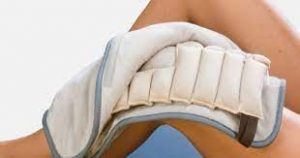Moist heating pad: What it is and how to use it?
What is a moist heating pad?
It is a form of heat therapy that uses moist heat only to cure muscle spasms, joint pain, and stiffness by drawing out the required moisture from the surrounding/air and absorbing it whenever the pad is on with a negative ion emission.
All you will get is a damp, wet heat working therapeutically to support maximum mobility that could be hindered due to pain or soreness. It produces enough moisture to treat your joints and muscles, aches, and discomfort with heat.
It has a wide application in relaxing your stressed muscles, reducing inflammation, and increasing blood flow, especially to the area where the pad has been placed. Genuinely speaking, heating pads can be your rescuer, particularly in the winter!
Moist heating pad vs. dry heating pad
Dry heat
It is also known as “conducted heat therapy” and is easier to apply compared to moist heat. The most commonly used products are pads, packs, and saunas. They get heated in no time and stay heated for a longer duration, leaving no mess behind. But, it might dry out your skin by causing dehydration.
Moist heat
Also called convection heat, it seems more effective and quicker to heal injuries than dry heat. The most commonly used sources include steamed towels, moist heating packs, and hot baths. As they use moist heat, it never dehydrates your skin and intensifies tissue elasticity. It is ideal for aged patients and people with dry or sensitive skin.
Although its application is not as easy as dry heat, it has a lesser application time. It penetrates fast into deeper skin.
How does a moist heating pad work?
- By stimulating the sensory receptors, the pain signals from your aching muscles and joints will not be transmitted to your brain.
- By minimizing muscular tension and enhancing tissue elasticity. It helps relax the aching knots and effectively sedates the painful nerve endings.
- By increasing the healthy flow of blood and nutrients, moist heating pads are designed to deliver deep heating, supporting a faster healing rate.
- By improving your metabolic rate, your body gathers more energy for injury repair.
- By widening or dilating your blood vessels, can significantly decrease your muscle spasms.
What is the best filling for heat packs?
- Lava Sand
- Corn Kernels
- Rice
- Steel-Cut Oats
- Flax Seed
- Wheat Berries
- Cherry Pits
- Pearl Barley
- Clay Beads
- Walnut Shells
How to use a moist dry heating pad?
For several types of pain, feel free to place and use heating pads differently. But always look out for the time! No matter how severe the injury, the heating pad should never be placed in any part of the body for more than an hour.
Start by lying down slowly, and then place your pad over the affected area to prepare your body to handle the abrupt temperature change. Do not forget to keep a piece of comfortable and soft fabric between the pad and your skin to prevent direct heat, overheating, or burns.
Benefits of a moist heating pad
- Relief from aching and painful muscles
- A medication-free way for stiffness of joints
- Keeps your surroundings warm
- Quick improvement in muscular soreness
- Relieve eye pain faster
- Soothes, period cramps, and pain
- Provides deeper and faster penetration in the tissue than dry heat
- Speeds up recovery/healing time by improving the healthy blood flow
- Never dries your skin and causes irritation or dehydration
Side effects of a moist heating pad
- Burns and overheating
- Feeling hot/overheating
- Generalized weakness (asthenia)
- Abnormal body thermoregulation
- Abscess
- Erythema

DIY moist heating pad
Method one
- Take a large bowl and fill it with hot but not boiling water
- Take a clean towel and let it soak in the water
- Get rid of extra water/moisture by squeezing or wringing the towel
- Make a square out of your towel by folding
- Place it over the affected, painful area
- Keep the soaked hot towel over your skin for 20 minutes
- Take a break for 10-20 seconds and repeat the process
Method two
- If you have access to a microwave, you can also try making your moist heating pad. Just grab an extra towel and a microwave-safe Ziploc bag and follow these steps:
- Fill your bowl with hot water and leave the towel to soak
- Take the towel out and wring it, removing excess water
- Put the damp towel in the zip lock bag but keep the bag open
- Leave the bag in the microwave for a maximum of 2 minutes
- Take the bag out of the microwave and seal it
- Take another soaked towel and wrap it around the ziplock bag
- Keep the wet hot towel over your skin for 15 to 20 minutes
- Take a break for 15-20 seconds and repeat the process
Method three
- Take a clean and washed pair of socks
- Fill the foot part of the socks with uncooked rice
- Tie them off to keep the rice sealed inside
- Put the filled socks in the microwave for a maximum of 30 seconds
- Keep heating it with 15-second increments until it gets warm but not too hot
- Place the socks over the painful area for 20 minutes at
Do moist heating pads work?
Yes, absolutely!
A moist heating pad works brilliantly for all body pains and fatigue. It makes your muscles and tense, stressed-out tissues feel better without drying out your skin.
The ability of moist heating packs to support blood flow, provide nutrients, quicken healing time, and provide utter comfort to the muscles. Guaranteed pain relief!
Additional Questions
How do you use a moist heating pad?
Using a moist heating pad effectively involves a few careful considerations. You start by placing these pads inside covers for safety reasons before applying them to the area where there’s discomfort or pain. It’s very important to keep an eye on the heating pad throughout its use to ensure that the skin does not overheat and cause burns. Moreover, please remember that if the area in question is bruised, swollen, or the skin is hot to the touch, it’s better to avoid heat therapy. In my experience, it’s best to consult a medical professional who can guide you on how to use this therapy based on your specific medical condition. Sensitivity to heat can widely vary among individuals.
What is a moist electric heating pad?
A moist electric heating pad, like TheraTherm Digital Electric Moist Heating Pads, is a remarkable therapeutic tool that offers temporary relief from pain. The heating pad works primarily by absorbing moisture from the surrounding air and retaining it in its 100% cotton cover. This retained moisture then provides a gentle and effective heat therapy especially beneficial for alleviating muscle strain, tension, and resulting spasms. Drawing from my personal experience, using a moist electric heating pad has often served as a comforting remedy after long hours of physical activity or strain, effectively easing muscle stiffness and promoting relaxation.
Why do you use a moist heat pack?
Utilizing a moist heat pack is a common preference for many because of its distinct therapeutic value. When placed on the skin, it enhances blood circulation and relaxes muscle tissues significantly, thereby relieving pain. Akin to taking a warm bath, the moist heat pack works on dilating the blood vessels while loosening the tissues. This therapy particularly aids chiropractic adjustments and therapeutic exercises by increasing blood flow and easing the rigidity of muscles. I often turn to a moist heat pack for relief after a strenuous session at the gym or an extended period of desk work.
What is a moist pad?
A moist pad, or a moist heating pad as it’s often referred to, is a therapeutic tool widely used for delivering moist heat therapy. It’s indeed a popular choice for alleviating discomfort in sore muscles and joints. The key advantage is that it leverages water as a medium, allowing the heat to reach the discomfort site swiftly. Think of it as a personal sauna for your aching muscles. Over the years, I have recommended moist pads to friends and family with chronic back pain or those who’ve sustained sports injuries, and they’ve always testified to their effectiveness. Remember, it’s always beneficial to consult a doctor or physical therapist who could guide the best practice to use moist pads.

Annika Ramos is a physiotherapist with a passion for helping people recover from injuries and illnesses. In her spare time, she enjoys exploring her creative side through various craft projects.

